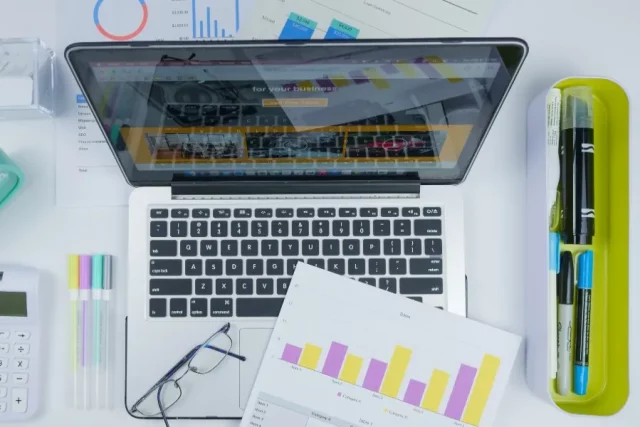Data staging is an important part of data processing, and understanding how it works can help organizations make the most of their data. In this article, we’ll discuss what data staging is, why it’s important, and how you can use it to your advantage. We’ll also provide some helpful tips for setting up your own data staging system. So, if you are looking to get the most out of your data, keep reading!
About Data Staging
Data staging is the process of transferring data from its source to a target or endpoint. This involves extracting data from the source, transforming it into a format usable by the target system, and loading it into that system. Data staging enables organizations to take advantage of the most efficient and reliable forms of data transfers while also allowing them to maintain control and accuracy over their data. You will need a practical data processing tool to carry out these processes. When you can rely on data staging, you know that your information will be consistent, up-to-date, and secure. Having a reliable data staging system also ensures that your data is being used efficiently and in the most cost-effective way.
Why Data Staging Is Important
Data staging helps organizations store, manage, and process large amounts of data in an efficient manner. By transferring data from one system to another, organizations can free up their primary systems for other tasks and ensure that their data is consistent across multiple sources. Additionally, using a data staging system can help organizations better protect their data and ensure that it is accurate. The details of data staging can vary depending on the organization’s needs, but it is a necessary component of any successful data strategy.
Internal Staging
Internal data staging, also known as in-house data staging, is when an organization uses its own hardware and software to move data between systems. This allows organizations to keep all of their data within a single system, giving them greater control over the accuracy and security of their data. This method can be expensive but offers flexible scalability and a higher level of control. A lot of enterprise organizations employ this type of data staging and are willing to invest in the necessary hardware and software to get the most out of their data. The outcome is worth the cost, as it offers a high degree of security and reliability.
External Staging
External data staging is a cost-effective and speedy solution for organizations looking to migrate their data between systems. Although this method may appear extremely convenient, there could be potential security risks due to the loss of control over where your confidential information is stored or how it’s being processed by third-party services.
On the other hand, external data staging can be beneficial when it comes to scalability, as they are often faster and more reliable than in-house systems. It can give organizations the flexibility and agility they need to quickly transfer large amounts of data.
Setting Up Your Own Data Staging System
When setting up your own data staging system, there are several important steps to consider. First, you’ll need to identify which source systems will be used for the transfers. This may include databases, files, or other sources of data. Once you’ve identified your source systems, you’ll need to create a staging table for each source system that can be used as a temporary storage location for the data. After this, you’ll need to define the transformations and mappings needed to transform the data from its original form into a usable format. Finally, you’ll need to load the data.
Tweaking Your Data Staging System
To maximize the efficacy and accuracy of your data staging system, there are a few key steps you can take. Begin by automating tedious scripts so that manual labor is no longer required. Additionally, store all source data in one easily-accessible central repository to monitor updates quickly and accurately. Lastly, ensure that regular tests are conducted on your system – this will guarantee it’s performing optimally! If any of the tests fail, make sure to address the issue as soon as possible.
Become An Expert In Data Staging
Data staging is a critical component of any successful data processing system. By understanding how it works, you can become an expert in leveraging it to your advantage. With the right setup and regular testing, you can ensure that your data remains accurate and secure while also taking advantage of its efficiency for faster transfer times. With the right strategy, you can use data staging to maximize your organization’s data potential.
Zoning In On Data Quality
When it comes to data staging, accuracy, and timeliness are paramount. To guarantee that your transferred and transformed data satisfies the highest standard of quality throughout the process, a thorough testing system must be established. In addition, an ongoing monitoring program should be implemented in order to rapidly detect any potential faults or inconsistencies. Such measures will ensure that you always have clean and reliable information for all of your pipelines!
Access And Transformation Of Data Securely
Data staging is an efficient way to transition data between systems, however, safeguarding the information is of utmost importance. Taking active steps such as encryption and passwords will give you peace of mind knowing your confidential details are secure throughout all transfers. By implementing these authentication measures, you can ensure that your data remains uncompromised at all times.
Implementation In A Real-World Setting
Data staging is an important tool for businesses of all sizes. Proper implementation of data staging can help organizations streamline operations and maximize their data potential. Companies should consider setting up a system that meets their specific needs to ensure the most efficient transfer, transformation, and storage of their data. With the right setup, businesses can become more agile, secure, and efficient! Once you’ve identified your source systems, you’ll need to create a staging table for each source system that can be used as a temporary storage location for the data. After this, you’ll need to define the transformations and mappings needed to transform the data from its original form into a usable format. Finally, you’ll need to load the data into your target system. To ensure a successful transfer, you should always test the process and monitor the results to make sure there are no errors or discrepancies when transferring data between systems.














